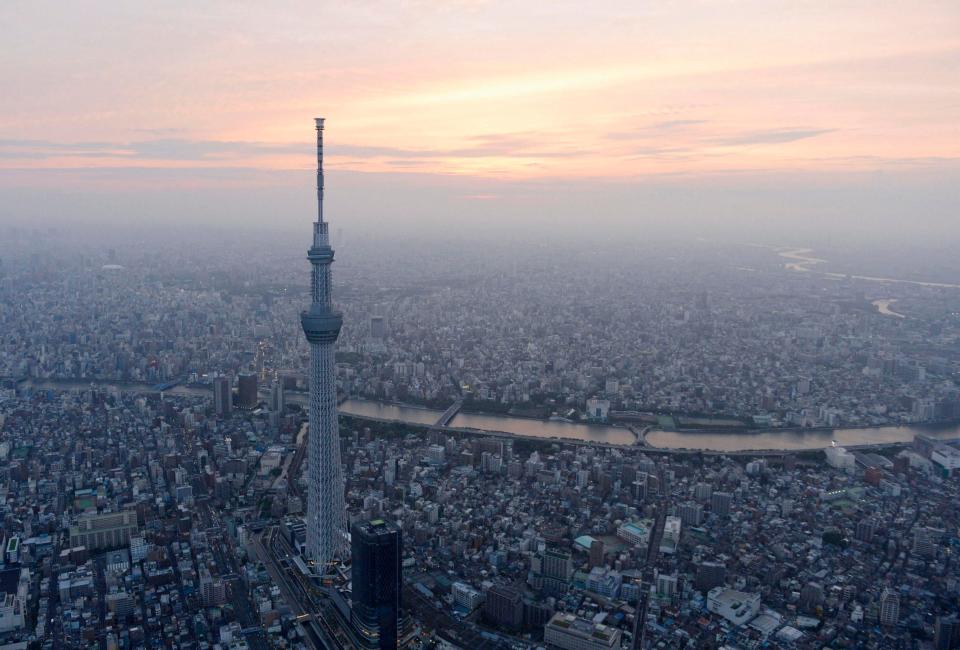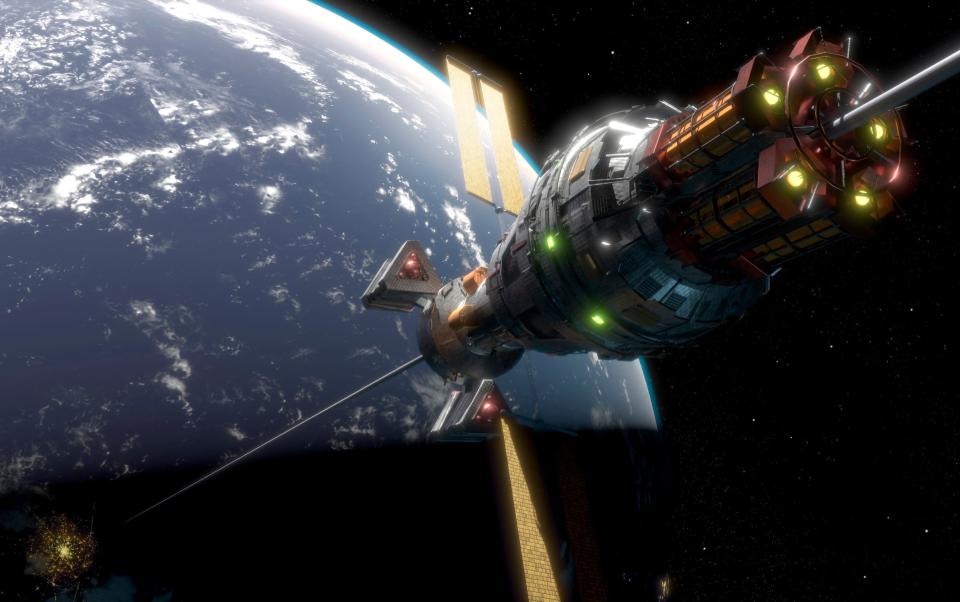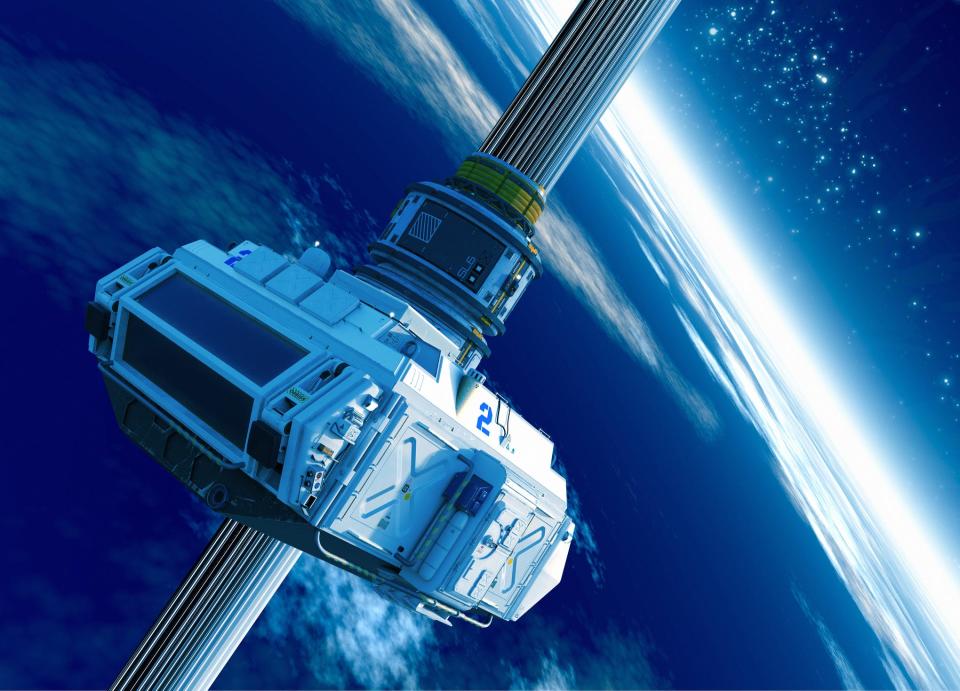-
A space elevator could make transporting goods to other planets like Mars much cheaper and faster.
-
Japan-based Obayashi Corporation announced in 2012 that it planned to start building one next year.
-
Not only does it cost $100 billion, it also poses major technological and organizational challenges.
Imagine a long rope connecting Earth to space that could launch us into orbit at very low cost and launch us to other worlds at record speed.
This is the basic idea behind the space elevator.
Instead of taking six to eight months to get to Mars, scientists estimate that a space elevator could get us there in three to four months, or even in as little as 40 days.
The concept of space elevators is not new, but engineering such a structure is not an easy task and many other challenges besides technology lie ahead.
So the ambition to seriously build one is fairly new.
Japan-based Obayashi Corporation thinks it has the expertise.
Japan aims to build a space elevator by 2050

Obayashi Corporation, known for building the world’s tallest tower, Tokyo Skytree, announced that it will reach even higher heights with its own space elevator in 2012.
In a report published the same year, the company said the $100 billion project would begin construction by 2025 and could become operational as early as 2050.
We spoke to Yoji Ishikawa, who wrote the report and is part of the company’s future technology creation department, to see how the project progresses ahead of 2025.
While Ishikawa told Business Insider that the company probably won’t start construction until next year, it is currently “busy with research and development, rough design, partnership building, and promotion.”
Some doubt that such a structure is even possible.
“It’s a bit of a strange idea,” said Christian Johnson, who published a report on space elevators in the peer-reviewed Journal of Science Policy & Governance last year.
“However, there are some people who are real scientists who really agree with this and really want to make this happen,” Johnson said.
A cheaper route to space


Launching people and objects into space on rockets is extremely expensive. For example, NASA estimates that four Artemis moon missions will cost $4.1 billion per launch.
This is because of something called the rocket equation. Going into space requires a lot of fuel, but fuel is heavy, which increases the amount of fuel you need. “And you see kind of a vicious cycle there,” Johnson said.
With a space elevator, you don’t need a rocket or fuel.
According to some designs, space elevators will carry payloads into orbit with electromagnetic vehicles called climbers. These climbers can be powered remotely, such as by solar power or microwaves, eliminating the need for fuel.
In his report for the Obayashi Corporation, Ishikawa wrote that this type of space elevator could help reduce the cost of transporting goods into space to $57 per pound. Other estimates for space elevators in general put the price at $227 per pound.
Even SpaceX’s Falcon 9, one of the cheaper rockets to launch at around $1,227 per pound, costs about five times more than high cost estimates for space elevators.
There are other benefits besides cost.
Johnson said there was no danger of the rocket exploding and the climbers could be zero-emission vehicles. Obayashi Corporation’s climbers will move slower than rockets, at a relatively slow speed of 120 miles per hour, with less vibration, which is a good thing for sensitive equipment.
Ishikawa said Obayashi Corporation sees the space elevator as a new kind of public works project that will benefit all humanity.
There isn’t enough steel on Earth to build a space elevator


One of the biggest hurdles to building a space elevator right now is where to make the tether or pipe.
If made of typical materials such as steel, the pipe must be very thick to withstand the tremendous stress it will be subjected to. But “if you tried to make it out of steel, you would need more steel than is available on Earth,” Johnson said.
Ishikawa’s report suggested that Obayashi Corporation could use carbon nanotubes. A nanotube is a wrapped sheet of graphite, the material used in pencils.
Compared to steel, it is much lighter and less likely to break under stress, so the space elevator could be much smaller, Johnson said. But there is a problem.
Although nanotubes are very strong, they are also very small; Their diameter is one billionth of a meter. And the researchers didn’t keep them for very long. The longest is only 2 feet.
According to Ishikawa’s report, the tether needs to be at least 22,000 miles long to be properly balanced when reaching geosynchronous orbit, where objects remain in sync with the Earth’s rotation.
“So we’re not there,” Johnson said of the nanotube length. “But that doesn’t mean it’s impossible.”
Instead, researchers may need to develop an entirely new material, Ishikawa said.
Other obstacles


Whatever the material, there are still other problems.
The rope of a space elevator, for example, would be under such incredible tension that it would be prone to breaking, Johnson said. A lightning strike could vaporize it. There are other weather conditions to consider, such as hurricanes, monsoons, and tornadoes.
Positioning the hub at the equator would reduce the likelihood of hurricanes, but it still needed to be in the open ocean to make it harder for terrorists to target, Johnson said.
Many trips would also be required to make up for this huge price tag for construction.
This just scratches the surface of the challenges. Not all of these can be solved by a single company, Ishikawa said. “We need partnerships,” he said. “We need different sectors”
“Of course,” Ishikawa said, “raising funds is very important.”
There are many hurdles to overcome for construction to be operational by 2050, especially since Ishikawa estimates that construction will take 25 years. He noted that the 2050 forecast always comes with caveats about the advancement of technology. “That’s not our goal or our promise,” he said, but the company is still targeting that date.
“Even if we assume there will be an improvement tomorrow, I think these time forecasts are optimistic,” Johnson said.
Read the original article on Business Insider